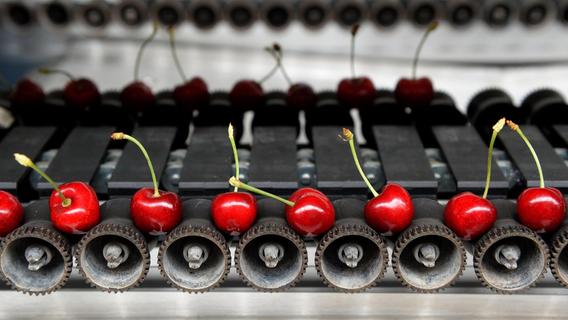The For5G project makes cherry farming more digital. The core of the project in Franconian Switzerland is the generation and analysis of a “digital twin” of fruit trees. Drones provide data.
As part of the “For5G” project, a practical application of 5G networks for cherry cultivation is being developed.
The heart of the project, located in Franconian Switzerland, is the generation and analysis of the “digital twin” of fruit trees. The knowledge gained in this way should also be transferred to other applications in the future.
Smart cherry cultivation in the Swiss Franconian region
The Fraunhofer Institute for Integrated Circuits (IIS), Friedrich-Alexander-Universität Erlangen-Nuremberg (FAU) and Weihenstephan-Triesdorf University of Applied Sciences (HWST) are working together on the implementation with the Horticultural Institute and Forchheim Region. The project is funded in the amount of 1.4 million euros by the Federal Ministry of Transport and Digital Infrastructure.
In the context of “smart agriculture”, more and more innovative technologies are being used for sustainable agriculture. This also includes the digitization and use of 5G applications, which represents another step on the road towards a profound change in traditional agriculture.
For agricultural companies, the resulting opportunities are great: an increase in production, a decrease in costs or an optimal use of resources are expected.
Drones provide data
A “digital twin” is an exact image of a physical object that allows it to be simulated, controlled, and improved. The image material required for creation is recorded by a drone and transmitted to a computer infrastructure using 5G technology.
Since the data on the drone itself cannot be processed, transmission technology is a key component to the success of the project. To address the poor coverage of agricultural areas with 5G, Fraunhofer IIS’s 5G mobile campus network is used, which can be flexibly moved to the respective site and ensures drone connectivity.
A sweet cherry tree was selected as the project’s first application. Creating a digital twin with a color 3D representation depicting the entire tree including fruits, pests and health status is the first stage of the three-stage process.
Most use cases can already be covered with it. Right after generation, the farm’s digital twin is available in the on-premises cloud. On-site data can be verified with various goals such as disease detection or yield prediction, and possible actions can be initiated that successfully manage the tree.
Various uses
Competencies in 5G and virtual modeling (Fraunhofer IIS) as well as robotics and visualization (FAU) as well as expertise in fruit farming (HWST/Forchheim region) optimally complement each other for the successful implementation of the project.
The possible uses of digital twins in agriculture and fruit farming are very diverse. The range ranges from assessment of the health status of individual trees to assessment of fruits to predictability of yield potential.
Importance at the EU level
Even entire forest areas can be analyzed in this way thus contributing to early detection of wildfire risks or early settlement of pests.
Forests are of great ecological and economic importance at the national level. Not only the federal state of Bavaria with nearly 2.5 million hectares of forest, but also other federal states including the European Union could benefit greatly from the introduction of new 5G technology.

“Certified tv guru. Reader. Professional writer. Avid introvert. Extreme pop culture buff.”








More Stories
Samsung Quantum Dot TV: Art meets technology
Pitch: €56m for energy startup Reverion
Plastoplan: Plastics for Energy Transition